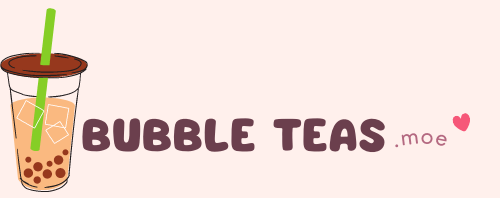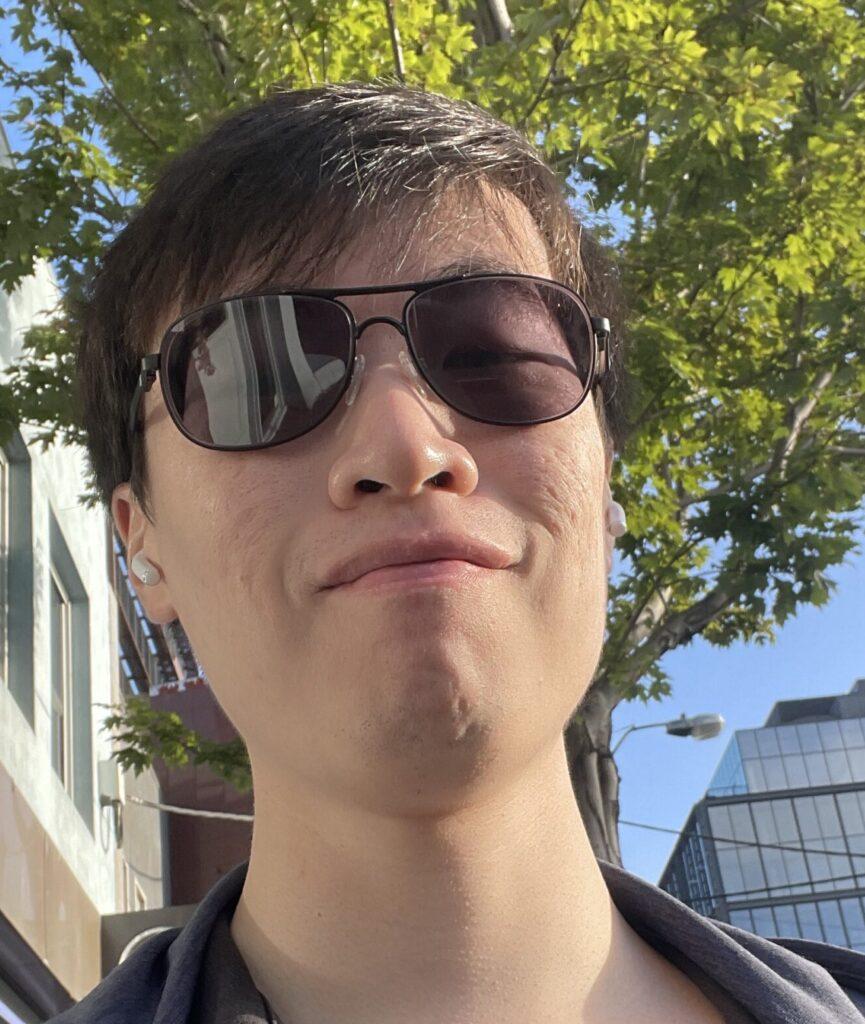Is boba tea gluten free? This question has been on the minds of many, especially those following a gluten-free diet due to celiac disease or gluten sensitivities. Here’s what you need to know: the primary ingredient in boba pearls, tapioca starch, is naturally gluten-free. Gluten is a protein that is not found in tea naturally so tea is always gluten-free. Boba itself is made of tapioca starch not flour so it’s natural for boba gluten-free products to be the main ingredient.
However, it’s important to note that not all bubble teas are created equal. While the traditional boba pearls used to make bubble tea are considered gluten-free, some milk tea bases may contain gluten ingredients. It can also get tricky when other elements come into play at your favorite bubble tea shop.
If you’re curious about specific variations like taro bubble tea or popping boba and their compatibility with a gluten-free lifestyle – hang tight! We’ll dive deeper into these topics and help you navigate your way through the world of boba, ensuring it’s gluten-free and safe for people with celiac disease or those who follow a strict bubble tea gluten-free diet.
Potential Gluten Contaminants in Bubble Tea
While many people on a gluten-free diet might wonder, “Is boba tea gluten free?” the answer isn’t quite as straightforward. Although boba pearls, also known as tapioca balls, are made from cassava root starch and are naturally gluten-free, there’s more to bubble tea than just these chewy treats.
One key component of boba tea is the tea base, often black tea or green tea. Thankfully for those with celiac disease or gluten sensitivities, this part of the drink is also naturally gluten-free. However, it’s essential to keep an eye out for potential cross-contamination in bubble tea shops where other products may contain gluten.
The next ingredient that could potentially introduce gluten into your beloved boba is what gives milk teas their creamy texture – dairy or non-dairy creamers. While most milk products do not contain any form of wheat protein (gluten), some creamers used by various boba shops might include ingredients derived from barley which contains a form of gluten.
Other potential sources of hidden gluten can be found in the flavorings and sweeteners used to make boba teas more delicious and unique. Some artificial flavorings may contain maltodextrin derived from wheat – though rare – it’s worth noting especially if you’re on a strict gluten-free diet due to celiac disease or severe sensitivity.
Here’s a quick summary:
- Boba pearls: Tapioca Pearls also known as Boba are naturally Gluten-Free
- Tea Base (Black/Green): Naturally Gluten-Free
- Dairy/Non-Dairy Creamers: Might Contain Gluten
- Flavorings/Sweeteners: Could Contain Hidden Gluten
If you enjoy making your own bubble tea at home using certified gluten-free ingredients would be an excellent way to ensure your drink is safe for consumption without risking any unwanted reactions caused by hidden contaminants.
It’s important when ordering at bubble tea shops to ask about their preparation process and whether they can cater to specific dietary needs like being vegan or maintaining a gluten and dairy free regimen. They should know if their product line includes anything that might threaten someone with celiac disease or other forms of gluten intolerance.
By asking these questions you’ll find out if boba truly fits within your dietary guidelines allowing you savor every sip without worry!
Is Popping Boba Gluten Free?
When it comes to popping boba, there’s good news for folks following a gluten-free diet. Most popping boba is, indeed, gluten free. This popular bubble tea ingredient is typically made from water, sugar, fruit juice and a thickening agent like calcium lactate or seaweed extract – all of which are naturally gluten-free ingredients.
However, while most popping boba should be safe for people with celiac disease or non-celiac gluten sensitivities to consume, it’s always best to check the label or ask the staff at your local bubble tea shop just in case.
The same goes for making bubble tea at home: ensure that you’re purchasing certified gluten-free popping boba if you want your homemade brew to be totally safe for a gluten-free diet.
A crucial point here is understanding that cross-contamination can occur in facilities that also process products containing wheat or other forms of gluten. Some brands may indicate on their packaging if this is a risk – “may contain traces of wheat” or similar wording would suggest they aren’t 100% certain their product hasn’t been contaminated by stray particles of wheat during processing.
But what about traditional boba pearls? They’re often made from tapioca starch (extracted from cassava root), sweet potato and brown sugar – again all naturally gluten-free ingredients. However, as with any food product intended for those with dietary restrictions like celiac disease or non-celiac gluten sensitivity, checking labels remains key!
For instance, when ordering milk tea (which traditionally includes black tea and milk), ensure it doesn’t include any additional additives like malt flavoring which could potentially contain hidden sources of gluten.
When you’re craving some chewy goodness in your green tea drink but are worried about maintaining your gluten-free lifestyle – don’t fret! Most boba options will fit nicely into a gluten-and-dairy-free diet plan so long as care is taken when choosing flavors and toppings. Enjoying boba, whether it’s traditional pearls or fruity popping bubbles in various delightful flavors won’t have to be off-limits even if you’re on a strict dietary regimen!
Is Boba Tea Mochi Gluten-Free?
When it comes to the question, “is boba milk tea mochi gluten-free?” there’s a bit of complexity involved. As you might know, boba pearls (also known as tapioca balls) are a key ingredient in bubble tea. They’re made from cassava root starch, which is naturally gluten-free.
However, not all bobas are created equal. While traditional tapioca balls used to make boba are typically free of gluten, some variations may contain wheat or other forms of gluten due to added flavorings or colors. For instance, flavored bobas like taro bubble tea could potentially include ingredients that aren’t suitable for those on a strict gluten-free diet.
For those wondering about popping boba (the kind filled with juice), they’re often considered safe for people with celiac disease or non-celiac gluten sensitivity as they don’t typically contain any glutinous ingredients.
As for the ‘milk’ part of ‘boba milk tea,’ this usually refers to either dairy milk or a non-dairy substitute like almond milk. Both options should be safe for people who need their food and drinks to be both gluten and dairy free.
Now let’s discuss mochi – a Japanese sweet treat often found in desserts including bubble teas – which adds another layer of complexity. Traditional mochi is made from glutinous rice flour – while it sounds alarming, ‘glutinous’ here doesn’t mean it contains actual gluten. In fact, traditional mochi is generally considered gluten-free!
Nevertheless, caution should always be exercised when ordering at your local bubble tea shop because cross-contamination can occur if other items containing wheat products are prepared using the same utensils or surfaces.
To ensure safety:
- Ask if the shop uses certified gluten-free ingredients.
- Verify whether their tapioca pearls (boba) are pure cassava root without any additional fillers that may contain gluten.
- Check if flavored powders used might have hidden sources of wheat/gluten.
Gluten-Free Alternatives for a Bubble Tea Gluten-Free Fix
People with gluten sensitivities or celiac disease may find themselves asking: “Is taro bubble tea gluten free? Is popping boba gluten free?”. These questions are essential for anyone who needs to follow a gluten-free diet.
Tapioca itself is a starch extracted from cassava root that doesn’t include any form of gluten. It’s safe to eat for people with celiac disease or those who have opted to follow a strict gluten-free diet due to intolerances or allergies. So you can enjoy your boba drink without worry if you’re on a strict no-gluten regime.
However, while the core ingredient used to make boba pearls is indeed safe for your dietary needs, it becomes tricky when additional ingredients come into play during their production process at various factories and shops. Some manufacturers may add other elements that contain traces of this protein found in wheat and similar grains; hence one cannot guarantee all boba is completely devoid of any potential allergens unless they are explicitly certified as such.
So here comes the question: How do you ensure your much-loved drink is entirely devoid of this sneaky little protein?
The answer lies in preparing homemade alternatives where you control every aspect – right from sourcing certified ingredients to following vegan and also gluten-free recipes diligently:
- Make Boba at Home: You can create DIY bubbles using guaranteed sources like packaged tapioca flour which carries ‘gluten-free’ labeling.
- Use Gluten-Free Add-ins: If you’re unsure about store-bought bubbles carrying hidden traces of protein due to cross-contamination during processing stages – opt for safer alternatives such as popping boba made from fruit juices.
- Go Natural With Tea Base: Traditional options like black and green teas don’t have any inherent proteins associated with wheat-based products.
Remember though – everyone’s sensitivity levels vary so it’s best practice always checking labels before purchasing them or asking about allergen information when ordering at local shops!
It might seem like an extra step but doing so ensures each sip will be just as enjoyable without worrying about triggering unpleasant reactions later on!

